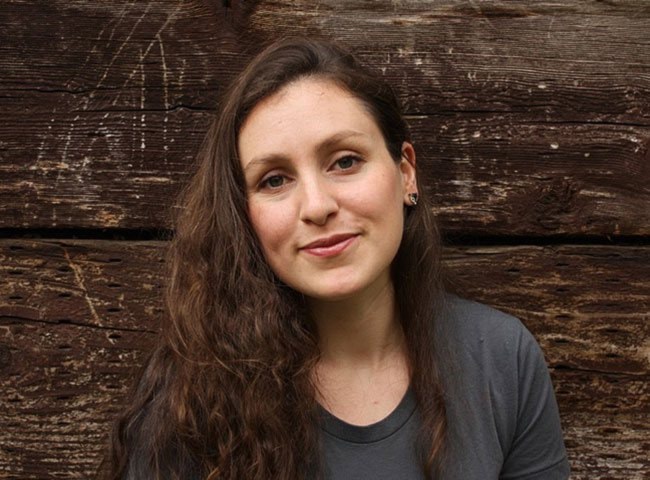Strange fascinations can lead to evocative art works. Andrea Kastner’s painting exhibition The Waste Land, currently showing at the ODD Gallery in Dawson City, is a strong example of how powerful work can emerge when an artist trusts their instincts. The skill of this painter who depicts garbage is such that her work was included in the 10-person show The Lure of the Local: Women Artists in the Canadian Landscape in Athens, Greece, at the end of 2013.
The former Montrealer was living in Edmonton to work on her masters of fine arts degree when she began wondering what people choose to toss away as trash. Kastner went for long walks down alleyways and brought home whole bags of garbage. Wearing gloves, she sorted through them as if they were mini-excavation sites. She meticulously organized their contents according to size and type and made precise lists.
“I kept thinking about trash as a diary, as secrets, as an identity or a code,” she says. “Eventually it occurred to me that a diary is different, because it records events we consider important, whereas trash is all the stuff we never even think about, the great roiling underground of daily life.”
From there, Kastner began thinking of garbage, and the landfills that result, as a version of the unconscious. She stopped making archival, accurate paintings of trash. It was time to create visual fictions that place the visual richness of sprawling rubbish heaps into relationships with buildings and roadsides. “It became clear as I was working on the paintings that this was why I cared about all that stuff,” she recalls.
“Some people find my work depressing,” she adds, but she sees her “small painterly way” as a way to think about excess and garbage directly, instead of suppressing the knowledge that it’s all there piling up.
Titles add sly humour to Kastner’s works. “Small disasters” (2014) is a group of four small square paintings infused with a specific, familiar shade of turquoise-green that first seems to recall garbage bags or swimming pool liners or… oh wait, those are crumpled, used… disposable diapers! The motivation for these works: Kastner initially painted them for a Mother’s Day show.
Other titles wryly illuminate the conflicts we feel on a personal or a community level when we discard formerly valued belongings. For example, Kastner composes an outsized heap of debris above an abandoned “heritage” building and calls the work “Keepsake” (2013). A pickup truck’s canopy tops the pile, perhaps recalling road trips, since that common activity often leads to people gathering memorabilia they don’t really want.
The exhibition title itself, The Waste Land, refers to T.S. Eliot’s long poem of the same name. In that poem, Eliot contemplates people’s fear-and-desire relationship with ruin and rubbish, among other topics. Kastner creates the link, she says, as a way “to communicate to people walking into the show what kind of world I am trying to draw out.”
Kastner completed her MFA in 2012, the same year she was shortlisted for the RBC Canadian Painting Competition. Then she and her husband, artist Colin Lyons, relocated to Kamloops, where she painted most of the works in The Waste Land.
The canvases offer smooth, seductive surfaces and colour combinations that are harmonious without becoming bland. Kastner’s confident, steady brushwork equally reveals her passion for geometry and light.
Sections of an abandoned apartment complex in “The Inventory of Dreams” (2014), for example, can be enjoyed as miniature colour-field paintings. Yet in the foreground, a capsized bathtub, looks queasy, most of the furniture is broken into sticks, and a bicycle may or may not be whole enough to use as an escape vehicle.
Kastner recently relocated with her family to Hamilton, but was able to come north for the Dawson City opening - the final stop on the show’s five-city tour. A fitting conclusion to her Yukon stint was a visit to the Quigley Landfill, also known as Dawson’s dump, free store and source for much reusable building and mechanical materials.
“Standing in the freezing cold at the dump, surrounded by compressed stacks of refrigerators and stoves as ravens made their eerie sounds - I think that will stay with me,” she reflects. “I think the images from the dump will keep showing up in the next series. I have a feeling that the next body of work will be more surreal perhaps, more otherworldly.”
In the meantime, The Waste Land is at the ODD Gallery until Dec. 6.
Meg Walker is a writer and visual artist based in Dawson City.
